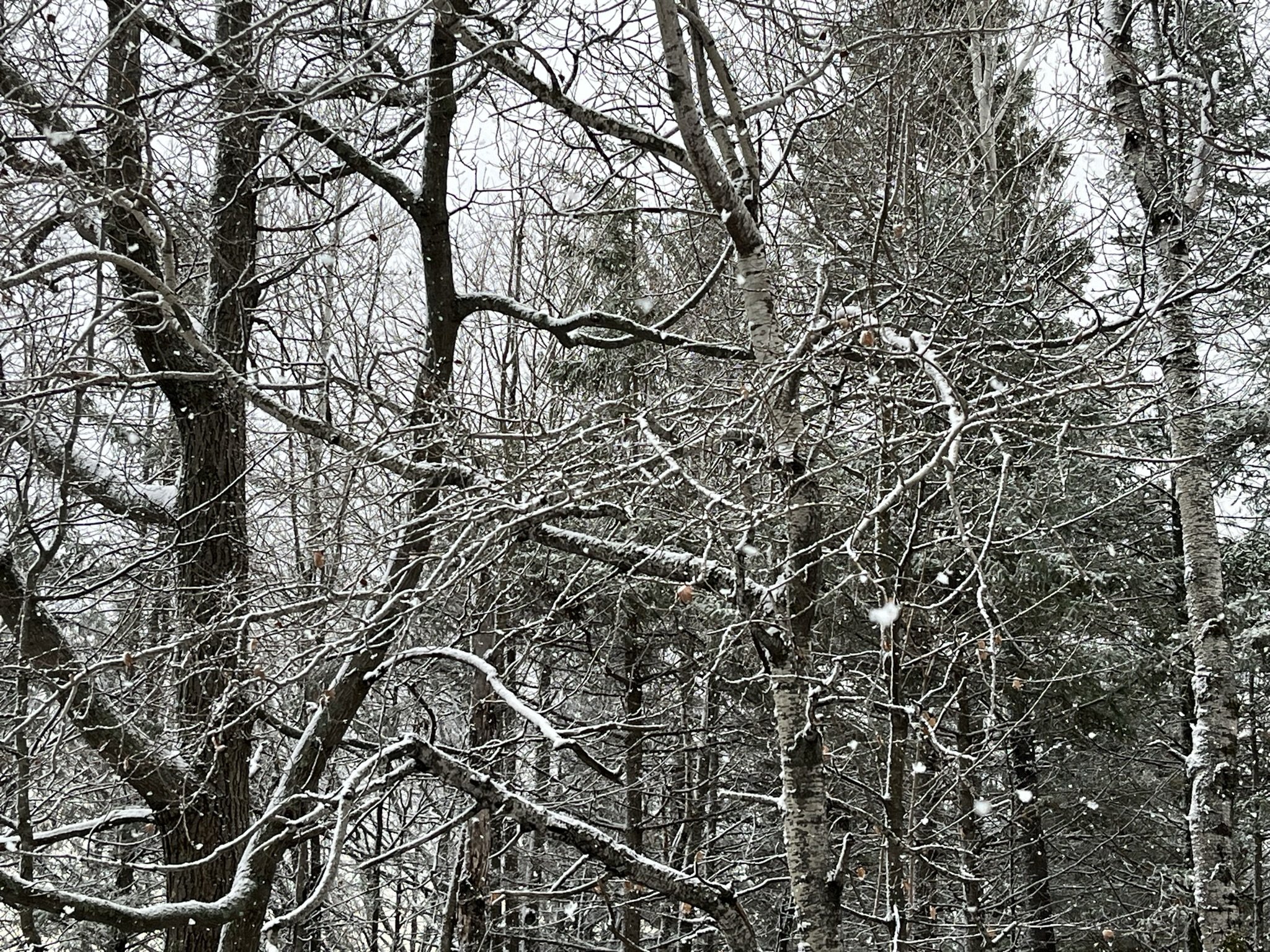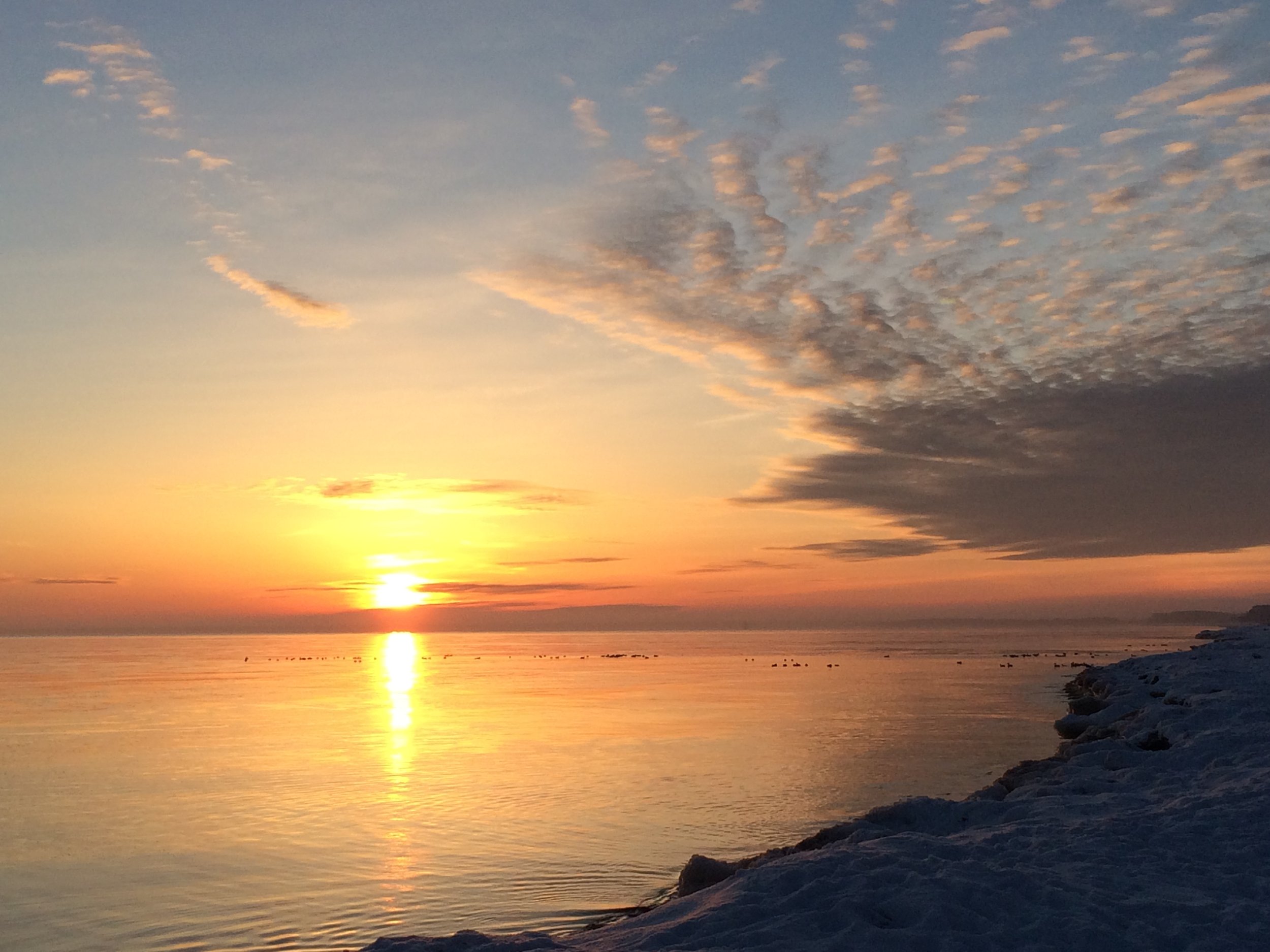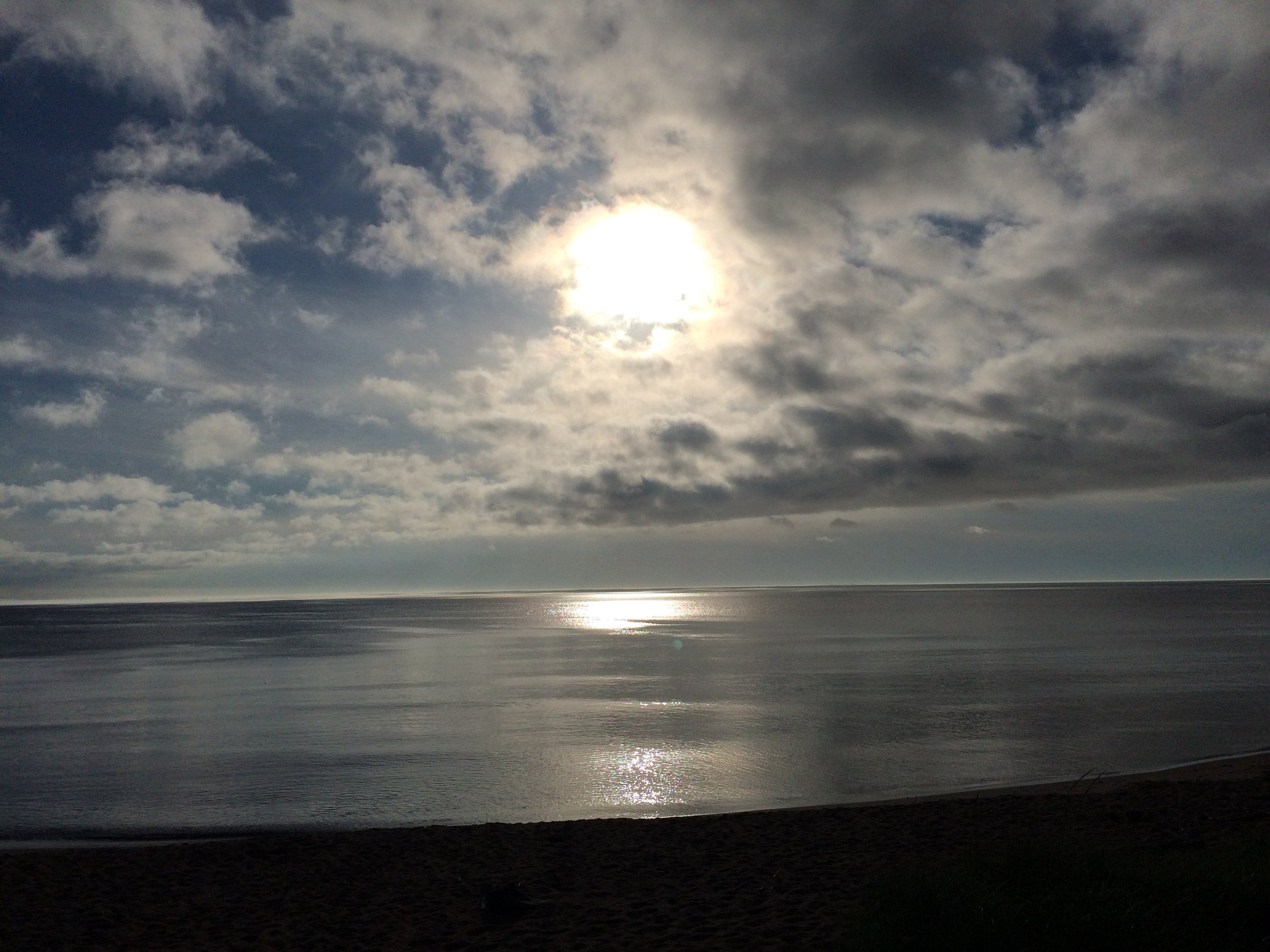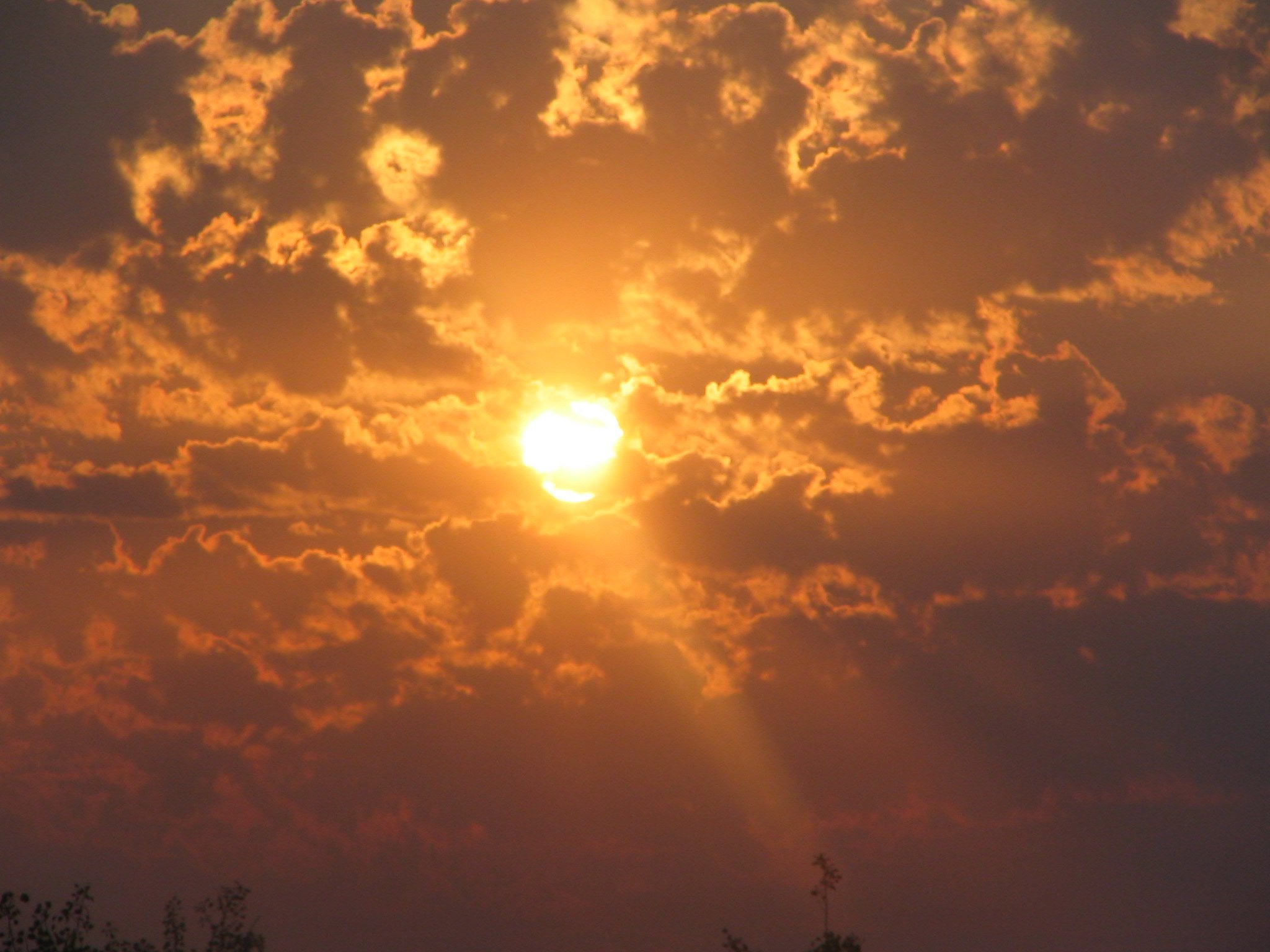The snow is gently falling this morning, covering the bare branches and ground with a blanket of white – a gift from the heavens on this day when I am feeling such despair for the world. The unspeakable horror of the ongoing death and destruction in Gaza wrenches my heart. “How many deaths will it take till they know that too many people have died?” Bob Dylan’s lyrics from another time echo in my mind. Have we learned nothing in all this time?
The rise of militarism goes hand in hand with the rise of misogyny. The Dobbs decision[i] was just the beginning it seems. So much hangs in the balance today, election day. In my former home state of Ohio, securing abortion rights in the state constitution is on the ballot. In my hometown today, the re-election of the first female mayor, a strong feminist who has done so much for the homeless and for climate change, is being significantly threatened. The new Speaker of the House is a “Christian Nationalist,” who seeks to undermine rights for women and LGBTQ folk while backing big oil and the NRA.[ii] And the country seems poised to hand the presidency back to a racist, misogynist, anti-democratic white male who has 91 criminal counts against him. What has become of us? What has become of the feminist/womanist future we seemed to be on the cusp of not so long ago.
The parallels between the long occupation and ceaseless bombing of the civilian population of Gaza and the treatment of the indigenous population in this country haunt me – the slaughter, the forced removal, the land theft and the continued shrinking of lands whose preservation was supposedly guaranteed by now broken treaties, the destruction of sources of food and water, the particular harm to women and girls witnessed still in the epidemics of domestic abuse, sexual assault and the missing and murder of Indigenous women. The same mindset that casts certain peoples as “other” – as disposable – seems alive and well. And so the questions repeat – have we learned nothing? What has become of the feminist future we envisioned?
As if this weren’t enough, we are on the verge of a climate catastrophe as deadly as the end of the Permian era of vulcanization.[iii] We are seeing the same rise in global temperatures, decrease in oxygen levels and increased acidification of the oceans, and dying off the great coral reefs that led to the mass extinctions at the end of the Permian era. And yet, living in denial, or perhaps simply greed, we continue to burn fossil fuels at alarming rates. As geophysicist Sonia Tikoo said, now “there’s no volcano – it’s just us.” We’re not releasing as many greenhouse gases as occurred during that era, but we are releasing them at a much faster rate. As climate scientist Priya Shukla said, “If the loss of life continues to go unchecked, we may very well be in the midst of another mass extinction on this planet.”[iv]
Susan Griffin’s words written in 1982 seem so applicable over forty years later. “This is a difficult year. Prospects for women and the world look bleak. . . . It becomes part of sanity to fear that soon there will be no human life on earth.” Yet, she goes on, “But fearful as I am, there is joy in me. While one eye sees disaster and the causes of destruction more clearly, the other eye awakens to beauty. . . . We are all connected. I know this. . . . We are made from this earth. This is my hope” (20).
Hope is an essential quality of the human condition, refusing to refuse us. The climate scientists and activists who contributed to Rebecca Solnit and Thelma Young Lutunatabua’s volume on climate change, Not Too Late: Changing the Climate Story from Despair to Possibility., fill its pages with hope. “Despair,” remarks Yotam Moran, “is the easy way out. Despair is also, quite simply, bad politics. . . . So what do we do when the world is ending? . . . We choose to face our despair -- to walk toward it and through it -- choose to take action, choose to build movements . . . because there are possibilities out there that we can’t simply see yet” (109-110). “What gives me hope,” writes Joëlle Gergis, “is that human history is full of examples of people across the ages who have risen to face the great challenges of their and time and succeeded against all odds. . . Every decision we make can be a decision to stop trashing the planet” (42-43). For co-editor Thelma Young Lutunatabua, choosing to give birth to a child in 2022 was an act of radical hope. She encourages us not to “surrender to the disasters and corrupt politicians,” but rather to “surrender to the new works of social change already showing us hope and possibility” (196-198). “It’s audacious and it requires tenacity to have a vision for a world we cannot materially see,” writes Gloria Walton. “It takes courage to challenge ways and build a better future” (57). Renato Redentor Constantino inspires that courage in us, writing, “ . . . when the sense of hope feels eclipsed . . . it is time to cast our own penumbral light . . . To come forth . . . Because this is our moment. We are the crescendo“ (81).
I heard the same indefatigable hope in the words of every indigenous woman I interviewed for Making Waves, each one celebrating their resilience and resolutely proclaiming, “We are still here.”
I heard it as well in the words of a young Jewish girl in hiding for her life during the Holocaust. As a dear friend recently reminded me, we are of the “Anne Frank generation.” We read and re-read Anne Frank’s Diary of a Young Girl at the same age she was when she wrote it. And we believed with her that despite everything, people are really good at heart. We, too, along with her, “can feel the sufferings of millions,” and yet have wanted to believe with her, “that it will all come right, that this cruelty too will end, and that peace and tranquility will return again” (233). An optimism about our capacity for good was woven deep into our bones from an early age.
I see evidence of that capacity all around -- in resistance movements; in global protests for a ceasefire; in humanitarian aid and healthcare providers working tirelessly to end suffering; in the efforts of friends, neighbors, and city officials to stem the tide of climate change – installing solar panels and heat pumps, planting trees, reducing consumption; in kindnesses large and small; in the human desire to be of use; in the ability of a child’s smile to touch our hearts with joy.
Watching the NOVA series, “Ancient Earth,” learning in great detail of the planet’s evolution from rock to verdant life, from a frozen planet to one where tropical forests grew at the poles, to the remarkable series of climate and geological events that made human life on this planet possible makes the preciousness of this life and our response to its precarity seem all the more urgent and pressing. We squander it with war and woundings, consumption and cruelty, oppression and “othering” of other species and our own. And yet, as Rebecca Solnit wrote, “the world will not stop being beautiful, not stop having sunrises and full moons, light pouring through clouds” (192), and delicate flakes of snow, dancing through the mourning, that lift us from our despair into the hope of action toward all we cannot yet see, but know to be possible.
Sources
“Ancient Earth: Inferno.” 2023. NOVA. Season 50. Episode 14. PBS.
Bartlett, Elizabeth Ann. 2016. Making Waves: Grassroots Feminism in Duluth and Superior. St. Paul: Minnesota Historical Society Press.
Dobbs v. Jackson Women's Health Organization, No. 19-1392, 597 U.S. ___ (2022)
Dylan, Bob. 1963. “Blowin’ In the Wind.” The Freewheelin’ Bob Dylan. Sony Music.
Frank, Anne. 1952. Anne Frank: The Diary of a Young Girl. Trans. B.M. Mooyaart. New York: Doubleday.
Griffin, Susan. 1982. Made From this Earth: An Anthology of Writings by Susan Griffin. New York: Harper & Row.
McQuilken, Hillary & Meghna Chakrabarti. November 6, 2023. “The Influence of Christian Nationalism in American Politics.” On Point. Boston: WBUR. NPR. The Influence of Christian nationalism in American politics | On Point (wbur.org)
Solnit, Rebecca & Thelma Young Lutunatabua. 2023. Not Too Late: Changing the Climate Story from Despair to Possibility. Chicago: Haymarket Books.
[i] The Dobbs decision is the US Supreme Court ruling in Dobbs v. Jackson Women’s Health Organization that overturned Roe v. Wade and led to the denial of the right to abortion in nearly two dozen states.
[ii] The Influence of Christian nationalism in American politics | On Point (wbur.org)
[iii] The Permian era is the 47 million year geologic period that spans from 298.9 million years ago to 251.902 million years ago. The end of the Permian was marked by the release of vast volumes of CO2 into the atmosphere from the eruption a large region of volcanic rock in what is now Siberia known as the Siberian Traps.
[iv] These references are from the 2023 NOVA series, “Ancient Earth: Inferno.”



